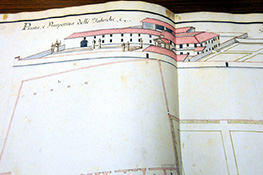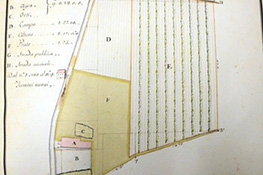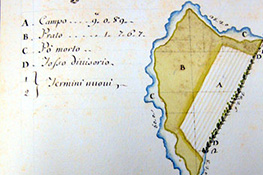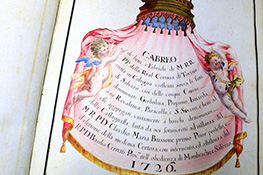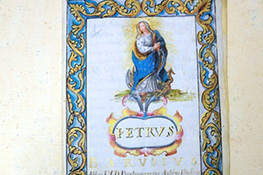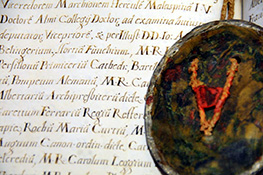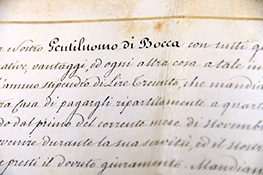Versione italiana English version Version française Versión en español
The cabrei were the inventories of the goods of the great ecclesiastical or stately administrations, accompanied by the documents that constituted them: maps, lists of goods, rights and easements. Built mostly from the 18th century, they were commissioned by noble families, ecclesiastical or public bodies, both to clarify the boundaries of their possessions, and to prevent dispersion and usurpation of the properties described.
The realization of the cabrei was entrusted to technicians surveyors, and some assumed the guise of public deeds, written by a notary. Of great interest are the annexes, consisting of numerous tables drawn or watercolor, often of fine workmanship.
Thanks to the descriptive part, you can know current prices and units of measurement, and trace back to the families that managed the goods: a photograph of the territory at a certain time.
The cabreo of the goods owned by Count Giuseppe Provana in the territories of Settimo and Gassino, dated 1732, and that of the goods and factories of the Real Certosa of Turin, existing on the ends [the borders] of Saluzzo (1726), are contained in the fund Families and Countries for A and B (curious archival term that denotes the classification of documents relating to these realities) kept at the Historical Library "Giuseppe Grosso". They contain large and beautiful watercolor illustrated tables.
Among the documents relating to the places (acts and public notices, decrees), in addition to the convertibles mentioned above, we point out a parchment dated Alba, 27th April, 1266, in which Jacopo Molinerio sells to the Umiliati a vegetable garden at the price of eighteen lire in Asti currency. It is the oldest document in the collection. Worthy of note is also a scroll of 1437, written in beautiful Gothic script, in which the inhabitants of Bruzolo deliver the goods to Guido Rivoyra lord of the place. A large notebook of 1887 contains the statistics of the Opere Pie of the Province of Turin (hospitals, kindergartens, orphanages, piety mountains, educational institutions and so on).
Among the documents relating to families (degrees, appointments, sentences, genealogies, memories), we find a "degree license in jure utroque" granted to Gian Giacomo Agnesina, dated 1684, richly illuminated and with a hanging seal, and another, curious, "gentleman of mouth" Granted in Turin in 1827 by Carlo Felice to Baron Giacinto Bianco di Barbania (the "gentlemen of mouth" were tasters and guests of the prince), as well as some notebooks of memories of the priest Giuseppe Martini da Cambiano, chaplain of the Solari della Margherita family. These diaries' date back to the years between 1843 and 1885 and are an important source of information for Piedmontese's history customs of the 19th century.

